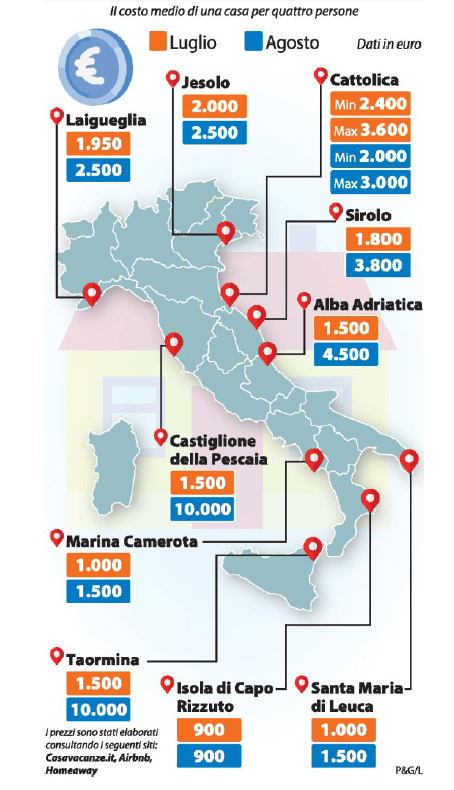27 October, Milano Finanza
St. Moritz is no longer the queen of the Alps, at least concerning prices. The highest price increase was recorded by Villars, in the Vaud canton, with a 6% increase reported by the Ski Property Index created by Knight Frank. The index follows the trend of centrally located four-bedroom chalets in 16 ski destinations in the French and Swiss Alps. The values of Villars (13 thousand francs/Sq m) have certainly benefitted from the presence of three international schools which foster the request for temporary accommodation, as well as from the recent investments in infrastructures such as new cable cars, a ski area for beginners and the possibility to sci by night. Verbier too shows a significant increase in the values with a 3.4% growth (22,300 francs/Sq m), confirming to be one of the most popular ski destinations thanks to its accessible and sunny position and the good offer on leisure activities. Apart from these two destinations, however, prices in Switzerland have slowed down their growth mainly due to a strong franc which deterred international investments, preferring France and Austria. The hard currency also had an impact on rentals, as the demand has weakened. In St. Moritz, prices have decreased by 11.1% (the indicative price for a chalet is set at 20,800 francs/Sq m). The main reason is the difficulty of making the demand and the supply meet, as the demand is preferring smaller properties than in the past.
In France, the price variation is not as sharp. The most significant variations were in Val d’Isère (+3%), followed by Chamonix (+2.3%). Val d’Isère, 1,850 metres of altitude, is one of the highest destinations in France, with ski runs at 3,400 metres, plus it benefits from heavy snows, excellent quality of skiing and a longer than average tourist season. Megève (+1.1%) and Courchevel attract the most exclusive tourists. The latter has seen the prices in its villages at 1,500 and 1,650 metres increasing by 2.2%, thanks to private and public investments. The perspective is optimistic, as Courchevel and Méribel (+0.9%) are included in the biggest ski complex in the world, “Les 3 Valées”, which will host the ski competitions in 2023.
In Italy, the decrease in values for touristic properties has also concerned mountain destinations. 2018 reported a negative performance comprised between -3% for dated properties in the outskirts and -2% for new good qualities properties. The figures are taken from the National Observatory for the touristic real estate by Fimaa-Confcommercio in collaboration with Nomisma. The survey reports that the average price of a mountain house is set at 3,090 euro/Sq m for new properties, 2,157 euro/Sq m for dated properties centrally located and 1,489 euro/Sq m for dated properties in the outskirts. Exclusive locations as Madonna di Campiglio (-3.5%) have also seen their value falling, although the selling prices here remain the highest (12,400 euro/Sq m), followed by Courmayeur (11,100 euro/Sq m) and Cortina (10.800 euro/Sq m).
Tecnocasa head of research centre Fabiana Megliola explains that “with the prices remaining unchanged or moderately decreasing, we’ve assisted in the past few months at an increase in the demand from various locations, from Cogne (it will host the world cross-country skiing competitions in February 2019) to Bardonecchia, Folgaria and Moena. The budget is rather limited and comprised between 200 and 300 thousand euro for one- and two-bedroom houses”. Tecnocasa reports an emerging positive trend represented by foreign buyers, especially Swiss and Belgians, interested in Cogne and Val di Fassa. Megliola concludes: “The most easily accessible areas are always the one reporting the best price performance. Such locations continue investing in infrastructure, sports and hotel facilities, broadening their range of services on offer”.
Source: Milano Finanza
Translator: Cristina Ambrosi

 Portugal
Portugal  Spain
Spain  Greece
Greece 








